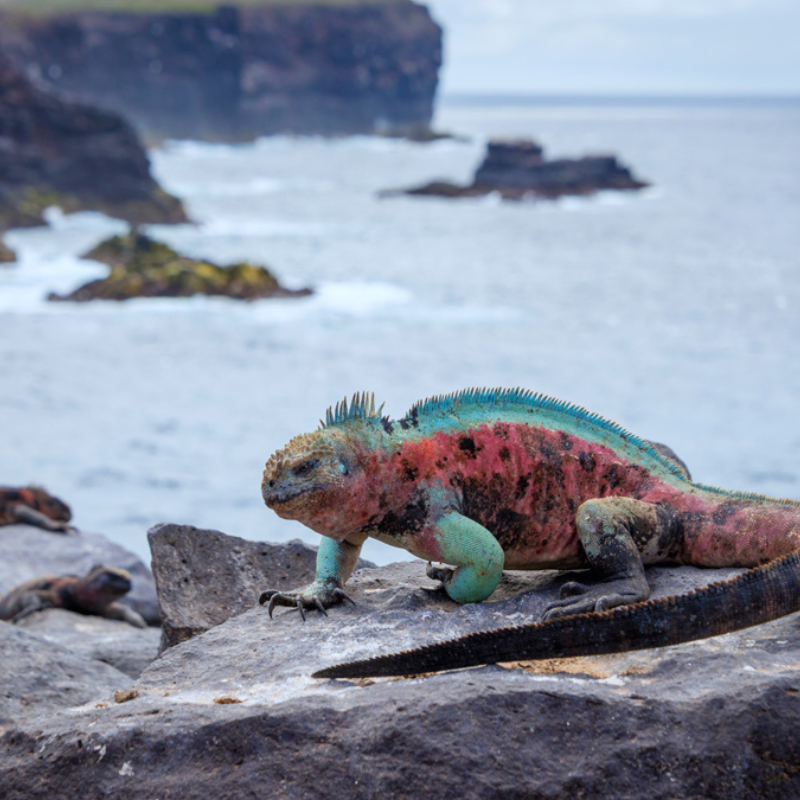Talking about Ecuador Generals in terms of its people is an interesting issue. This is due to the diversity of indigenous groups in the different regions. Ecuador Bike Rental offers motorcycle guided adventure tours in Ecuador. These tours give us the advantage to explore deeper into the different indigenous groups and regions. Additionally, we can reach geographical points faster that not every single visitor to Ecuador gets to see. Ecuador is divided into 4 natural regions: The Amazon Rainforest, the Andean Region, the Coast and finally the Galapagos Islands.

Our ethnic groups
According to statistics in 2010 the different ethnic groups found in Ecuador are:
Mestizos: 71.9% Montubios (country side people of the lowlands): 7.4% African-Ecuadorian: 7.2% Indigenous: 7% White: 6.1% Others: 0.3% Indigenous Groups of the Ecuadorian Amazon.
This natural region is the most diverse culturally and naturally, feel free to join us on a guided tour because riding through this natural paradise would give us a unique approach to this particular indigenous tribes that in most of the cases, they have kept most of the elements of their identity. Secoya and Siona These groups began to merge at the beginning of the 20th century, the Siona (approx. 200 people) and Secoya (approx. 250 people) are two different nationalities. Their cultures are similar, and their languages both belong to the Tucano language family.
Communities
Their communities are found along the Shushufindi, Aguarico and Cuyabeno rivers. Cófanes / A’i The Cófanes, or A’i as they call themselves, probably migrated to Ecuador from the Columbian Andes.
About 800 Cófanes inhabit northeast Ecuador between the Guamués and the Aguarico rivers. They closely link with the Secoya and Siona groups through intercultural marriages. Considered to be the fiercest warriors of the Amazon basin, the Waorani were able to keep settlers, oil, and timber companies out of their territory until the mid-20th century.
In the 1950s, missionaries (the Summer Linguistic Institute, SLI) established contact with these forest-dwelling people. They pushed them to move closer to roads and rivers. Like other indigenous nations, their population fell to a couple of hundred people as infectious diseases spread epidemically. Today approx. 2,000 Waorani live in Ecuador between the rivers Napo and Curaray.

Kichwa With 80.000 people and growing, the Kichwa are the most numerous indigenous nationality of the Ecuadorian Amazon. Though they speak a dialect of the Andean Quichua, they form a different cultural group. The Quichua language was introduced to Ecuador by the Incas, and was introduced in the Amazon by the churches after the lowlands have been discovered. So, various pre-colonial indigenous tribes supposedly emerged to form the Kichwa, developing a common identity and culture.Today many live in the cities of Tena and Puyo and surrounding communites.
Zápara
Zapara The Zápara are the smallest indigenous group and in Ecuador only 170 Zápara remain, many already of mixed ethnic origin. Three remote communities situated between the Conambo and the Jandia Yacu rivers in the Pastaza province live in areas accessible only by airplane or a several-day canoe trip. Achuar 6.000 people form the Achuar nationality. In their language, Achuar means “the people of the morete palm”. Living in the remote upper basin of the Pastaza River, close to the Peruvian border, the Achuar were unknown till the end of the 1960s.
Shuar
Shuar The Shuar were famous for their ritual of tzantza or shrinking human heads. The aim was to dominate the victim’s soul, which the warrior believed resided in the head, to prevent it from harming the warrior or his family any further. Today they are 80.000 people that live close to the rivers Pastaza, Upano, Zamora and the Morona’s tributaries. Shiwiar The 1.200 Ecuadorian Shiwiar live in the southeast of the Pastaza province. Similar to other nationalities the families live in subsistence from their “chacras” (forest gardens) and additionally hunt, fish, collect wild fruits and buy products like clothing, gasoline etc.

This picture above describes a bit what we will try to find during our journeys! Ecuador’s most experienced motorcycle rental and tour operator guarantees to show our customers the Andean landscapes, but besides the beauty of the mountains, the different Kichwa groups will give you an additional experience. This group distributes itself into communities in the different Andean provinces (9 provinces) and basically divides into the following clusters: the Otavalo of Imbabura–Carchi, the Tigua–Zumbagua of Cotopaxi, the Colta of Chimborazo, the Cañari of Cañar and Azuay, and the Saraguro of Loja.
There is no better place in the world for motorcycling than Ecuador. Our responsible Tourism sense we will give the freedom to discover the local culture respecting all the boundaries. African Slave ships first arrived to Ecuadorian ports in 1553, they worked on plantations or gold mines. Although, Ecuador abolished slavery in 1822, the descendants of enslaved Africans continued to suffer the consequences of that socio-economic system.
People
During the 18th century, the different religious orders brought slaves to work on their properties, mainly located in the Andes. That’s the main reason why we will find this lovely people on both regions of the coast and the Andes, and riding with us will let explore both areas increasing your Customer Satisfaction through sharing their culture. Ecuador Generals are huge when it talks about people, we will be happy to have you in this beautiful country. (The greatest soccer players are afro-ecuadorians!!)
| Visit Us | ECUADOR GENERALS – PEOPLE